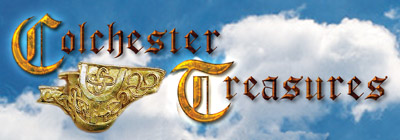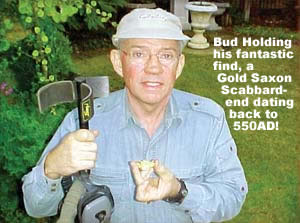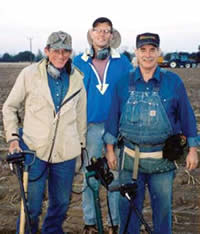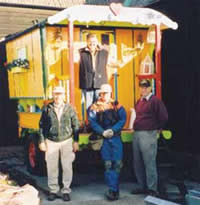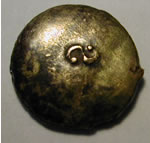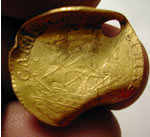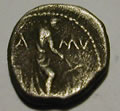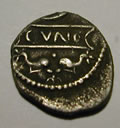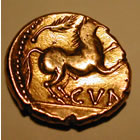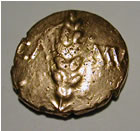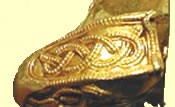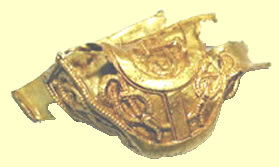|
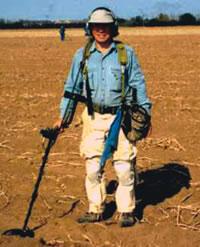
On our departure day we left for the Cleveland Airport with one eye
on Hurricane Isabelle passing through our connecting city of Pittsburgh.
My wife called while we were standing in line at the check-in to let
me know that our flights were cancelled. At the US Airways counter we
were delighted to find that we were booked to Philadelphia on Continental
and then back to US Airways arriving at Gatwick the exact same time
as originally scheduled. I said at the time that this seemed like a
good luck omen and predicted good luck for our trip. We felt lucky to
get any flight considering the hurricane had caused many cancelled flights.
|
|
|
|
|
The
Texans, Jim, Dave and John
|
Bud,
Dean and Eric
|
With
the farmer
|
Upon arrival the next morning at Gatwick local time 6:00 a.m., we did
not have to have our luggage inspected, because it did not arrive, probably
because of the airline change in Philadelphia. We were picked up promptly
at 7:30 as scheduled after verifying that our luggage was on the next
flight arriving at 10:00 a.m. The driver managed somehow to get the
van to the house in Colchester, driving from the wrong side of the van
and on the wrong side of the road. I closed my eyes a lot during transportation,
being very happy that I did not have to drive. Before going to the field
we were offered coffee in the conservatory, which is a glass sunroom
on the back of his home. We headed out in his twelve-passenger bus where
we met three other Americans detecting there and had some lunch before
getting to work. We were loaned a Fisher detector and we were ready
to go. I unfortunately had worn good clothes and shoes while Eric and
Dean wore jeans and hiking boots. I was loaned an extra pair of boots,
which almost fit, and I got started.
I found a few odds and ends the first afternoon, but nothing to write
home about. It was difficult getting used to a machine different from
the ones I am used to. I also like to get down on my kneepads when I
dig, which I didn’t have. I made a note to myself to wear older
clothes and pack a detector next time just in case. At 5:00 p.m. we
were picked up and taken to Lorna's lovely home. We were served take-out
fish and chips from a local restaurant, which was excellent. The remainder
of the two weeks we were served home cooked breakfasts and dinners fit
for a king. I even took a photo of one dinner to show my wife. The stay
with Lorna would have been worth the trip even if I didn’t find
anything while detecting.
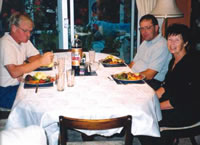
We unpacked our luggage
and settled into our rooms when our luggage arrived at 8:00 p.m. We
assembled our detectors to be ready for the next day. I somehow managed
to pack three detectors and associated support equipment. They were
the Minelab Explorer II, Whites XLT and a borrowed Troy Shadow X5.
The next morning we were picked up at 8:00 a.m., after a full English
breakfast of eggs and bacon, and taken to the Washington field where
the three other yanks were detecting. The field is named Washington
because a George Washington Inauguration button had been found there.
No one has any idea how that item could have gotten there. I had used
the Whites on the two previous trips and was happy with its performance,
but chose to start with the Minelab and the 15-inch WOT coil to cover
more area. I was detecting about 200 feet into the field when our guide
came by to see how I was doing. About 50 feet away, Alaska George was
down on his knees digging and he said, “What do you think this
is”. We walked over to George and he took the item in his hand
and said, “ I have no idea what this is” and handed it to
me. It was smaller than a dime and thicker. It appeared dark bronze
in color, but the high spots were gold colored. I said, “This
looks like gold”. Well, it turned out to be a very rare Celtic
coin from 30AD. Chris said, “There are some really good things
in these fields”. I had to agree.
|
|
|
One of a kind
Celtic gold 1/4 stater found by Alaskan George
Latest views
from the experts
"it's an
early (perhaps c. 50-40 BC) quarter stater, possibly produced
in Essex.
It seems to have developed out of the Gallo-Belgic D quarter
stater (Van Arsdell
69), imported in large quantities into Britain from Belgic Gaul,
possibly with
some influence from the so-called 'Kentish trophy type' (Van
Arsdell 147) of a
very similar period.
This particular
type is unpublished in any major catalogue,
|
After lunch, we went to the Church field, named because it is behind
the church, where I decided to try the Troy Shadow X5 that I borrowed
from my friend Keith. My arm was a little tired from swinging the heavier
machine. I had never used the Troy X5 before and had forgotten to get
the instruction book. Keith had told me to set the discrimination on
3.2 which would allow hammered silver to sound, sensitivity on 8 which
is standard and normal position an all of the other settings. I started
out across the field, which had been plowed and rolled. This leaves
the surface fairly flat with the ground soft and fluffy down about 12
inches. This makes it easy to walk and swing the detector keeping the
coil close to the ground. I found that I could swing the Troy X5 quite
fast with about one second arcs and still get deep targets. I dug buttons,
green coins, pieces of lead and shards of copper. Some of the lead was
very small #6 shot. I was impressed by the fact that with the Troy X5,
the decision to dig or not was easy. I didn’t have to look at
a meter or worry about hearing the tone of the signal. If it beeped
both ways and was not broken, I would dig. Sometimes when the signal
was broken, I would scrape the loose clods aside and re-scan to see
if the signal improved. I dug some of the broken signals to make sure,
and each time it would be a nail or small piece of iron.
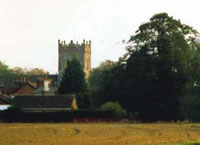
After a couple of hours I noticed Eric about 200 yards away and started
to detect in his direction to see how he was doing. I was going faster
than I normally would with about three feet between the ends of each
swing. I got a nice signal at the end of one arc and stopped to investigate.
The signal was sharp and repeated both ways after I centered the coil
over the target. The ground was quite fluffy so I used my boot to scrape
a hole about 6 inches deep from right to left. I rescanned and found
that I had moved the target. I put the Troy X5 down, got down on my
kneepads and grabbed a handful of dirt to pass across the top of the
coil, silence. Next I grabbed a clod of dirt the size of a medium potato
and passed it over the coil. Wammo, nice signal. I broke the clod open
and my first thought upon seeing the gold round thing was “This
gold foil bottle cap looks almost like gold”. I picked it off
the clod, it was bent on both ends something like a “Z”
and had a small hole along the edge. As I rolled it around between my
fingers the realization struck me that it really was a gold coin of
some kind. I could not believe that I had found gold my first full day
detecting in just a couple of hours with the Troy Shadow X5 that I had
never used before. I waved to Eric who was close by to show him what
I had found. Later after some research we found the coin was called
an Angel Medallion and was worn in the 1600’s for medical purposes.
|
|
|
Charles II Gold
Touch-Piece. Touched by Charles II himself at a Touching Ceremony.
Presented to a loyal subject by Charles II 1660- 1685.
Worn around
the neck for healing purposes found by Ohio Bud
CARMD.G.M.ER
EF.HI.REX on the ship side
GLORIA .SOLI
.DEO
George and the
dragon
 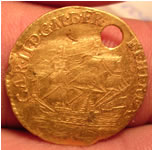
Buds coin straightened
|
I will get to keep this
one after the Colchester Museum checks it and all of the other finds.
They will mail it to me with an export license.
The next morning we were driven around to see all of the farm fields
where our guide has an agreement with the farmer to let us detect, about
5000 acres in all. One of the fields we saw was in stubble, but it is
not necessary to detect in stubble because there is so much plowed land
available. It was our choice each morning and afternoon as to where
we wanted to detect. Our guide told us about all of the different things
that had been found on each field and whatever looked good to us is
where we went. Our guide did not want us to blame him if we did not
find anything. Colchester was the first Roman settlement in Great Britain,
so the prospect of finding Roman artifacts is very good. Bronze age
ax heads dating back to 1000 BC have been found around Colchester. You
still have to work hard or have a lot of dumb luck. There seems to be
a couple of schools of thought on detecting techniques in England. One
technique is to go very slow and cover every inch of ground. The other
is to go fairly fast covering more ground until you hit something, and
then slow down and work the area. The fields are very large and you
could be detecting very carefully and spending hours where there is
nothing but dirt. I watched Mark who picked up us each morning, to see
how he used his Troy Shadow X5 while detecting. He covered the ground
at a good clip with large gaps in between the ends of each arc. He consistently
found many coins and a good number of hammereds. I also noticed that
my friend Eric detected quite fast covering a lot of area swinging his
Troy Shadow X5. He also did quite well finding many silver coins and
nice artifacts including a Silver Hawking Bell with the dinger still
in it.

I tried every time I
could to speed up a little and cover more ground. Each time I would
find something and slow down to work the area. I hardly ever got to
the other side of the huge fields like the other guys. I would end the
day with a pouch full of all kinds of stuff, usually over a hundred
items, some good coins and artifacts with a lot of lead scrap and small
bits of junk. Our guide kept telling me that I was doing OK and that
if I could find so many very small targets that I surely would find
a hammered if I would go over one.
On the 8th day there we tried the Michelle field, named for the hammered
silver found by her. I decided to use the Minelab again as I had carried
it every day and felt foolish for bringing so much equipment and not
using it. I managed to swing it all day and found a nice Roman bronze
coin of some kind. The Minelab is my favorite detector back home but
I thought that the extra capabilities were not necessary for this kind
of detecting. I switched back to the Troy Shadow X5 for the rest of
the trip.
I was happy when I finally found two hammered coins on the10th day of
detecting. We went to the field named for finding a Celtic Cross but
we were not the first ones to detect there since the field was harvested,
so I started detecting along the edge of a hedge row where the ground
was very rough because it had not been rolled like the rest of the field.
I figured that no one else would have detected there because the rest
of the field was so big that I could not see the far end of it. Since
the ground was so rough, I new that there would be a lot of air between
the coil and the ground. I had heard that the Troy X5 could do well
under these conditions. Two nice hammered coins later I became a believer.
When the lunch was brought lunch to us, he also had good news. The farmer
who owns the Roman Field, named because there was a Roman village in
the middle of it, was harvesting the potatoes planted there. Once we
arrived there, our guide took great pains to show us where the Scheduled
Land was. That is land that the Crown has decided should only be excavated
by archeologists. We stayed clear of that area. The potato machines
were still working driving along the mounded up rows and transferring
potatoes by conveyor belt onto a trailed pulled by a second tractor.
About every 300 feet the trailer was full with 13000 metric tons of
potatoes and a new trailer was brought up. I found a nice hammered silver
Elizabeth 1st Shilling and Niall, the guy from Ireland who joined us
when Dean left for the states, found a nice silver Celtic coin.
|
|
|
Very rare silver
1/4 stater Cunobelin tribe 10 to 40 AD Celtic coin Index 03.0812
found by Irish Niall
only one other
exist
|
Just as I was walking
back to the bus, I noticed our guidein the field talking to four of
the guys. One of them motioned to me and I went to see what was going
on. He handed me a beautiful Celtic gold coin that John from Texas had
just found.
|
|
|
Cunobelin Gold
full stater 10 to 40 AD found by Texas John
Celtic coin
Index as CCI 03.0811.
|
Needless to say, we all decided to go back to the Roman field the next
day. It was one of those days however when no one could find anything
good all morning. A few greenies and odds and ends came out of the ground,
but nothing to write home about. During lunch we talked about trying
another field but decided that since the potato pickers were still working,
making more field available, that we would just keep trying. I looked
out onto the field where the Seagulls were catching worms in the freshly
dug soil and said that the birds know where the gold is and I am going
to detect there. I walked out about 200 yards to where the birds had
been and started detecting the fluffy soil that the potato picker had
just left. I first got a greenie and decided that I could be onto something,
so I started taking half steps so to cover the ground completely. Within
about 10 feet I got a really nice signal and with my right foot moved
the loose soil over gouging a hole of about 5 inches deep. On my next
scan, the signal had moved. I got down and grabbed a handful of soil
and passed it over the top of my coil to hear a loud signal. I opened
my hand to see a nice chunk of gold looking back at me. Trying not to
have a heart attack, I brushed just enough dirt away to believe that
it was a piece of jewelry as I could see some fancy engraving on the
it. I placed it in the zippered pouch in my junk bag and started detecting
around the area to see if anything else might be there. I also always
carry the Garmin e-map GPS and locked in the Coordinates and named the
spot GOLDJLWRY.
After a few minutes of checking I headed over toward our guide who new
something was up as soon as he saw my face. I first told him that all
I had wanted to find was a nice gold Roman coin, but I found this instead,
and dropped it into his hand. I cannot repeat on this forum what he
actually said, but it was not Holy Mackerel. We headed to the bus where
he got a cup of water and dipped the item until the dirt dropped away.
It was a beautifully engraved scabbard end for a dagger or sword. It
had been damaged by the plow or something but that did not take away
from the beauty of the engraved ropes tied into various knots on both
front and back and the sides. Our guide took the gold to show to the
farmer and the Colchester Museum. Later we learned from the Museum people
that I had found a very rare gold Saxon scabbard end from 550AD. I went
back to detecting and we did not tell anyone until later so as not to
cause a panic. Our guide also did not want the farm hands to see the
gold, as it would have been difficult for them to work knowing that
there was gold with them potatoes.
The next day the experts
from the Colchester Museum met us and gave me a receipt for the Saxon
Gold, as it would certainly be considered treasure. Later when I got
home several people asked why I just didn’t keep the gold and
not say anything. Believe it or not it never crossed my mind. I think
that the British Treasure Act is fair. Everyone wins as the museum gets
treasure items to display that might never come to light otherwise.
It also adds to our knowledge of history to have learned people fill
in the many blanks in our history. A panel of experts, at the Museum
of London, will appraise the Saxon Gold. The farmer and I, the finder,
will split whatever that amount is. The Treasure act encourages the
farmer to let people detect on his land and encourages detectorists
to travel there for the chance of finding something very old and maybe
valuable. Besides I don’t think is right to go to another country
and steal their antiquities. I wish the United States had a system like
the British where Detectorists and Archeologists could work together
to find historical items that would help verify or rewrite history instead
of leaving them lost forever.
On the 13th day of detecting I just kind of went around the field swinging
halfheartedly. I was hoping the other guys would find something good
as I had had enough good luck for one trip. Anyone taking this trip,
hoping to strike it rich, should be forewarned that detecting from 8:30
to 6:00 everyday is a lot of hard work. I almost hate to recommend the
trip because when I attempt to schedule next year there will not be
a time slot for me. At least I will be able to travel a little lighter
because I will take just the Troy X5 that I will purchase in the meantime.
On the last day both Eric and I felt that we had had enough detecting
and had not yet seen the town of Colchester or the museum. Our guide
dropped us off in front of the museum and we spent the day looking around
and wondering what it would have been like when the Romans occupied
the town back about 2000 years ago
Since Bud wrote this
article all his finds with the exception of the Saxon dagger piece have
been exported successfully to him. The Saxon dagger was declared treasure
and bought by the Colchester museum and he received his finder fee.

|


